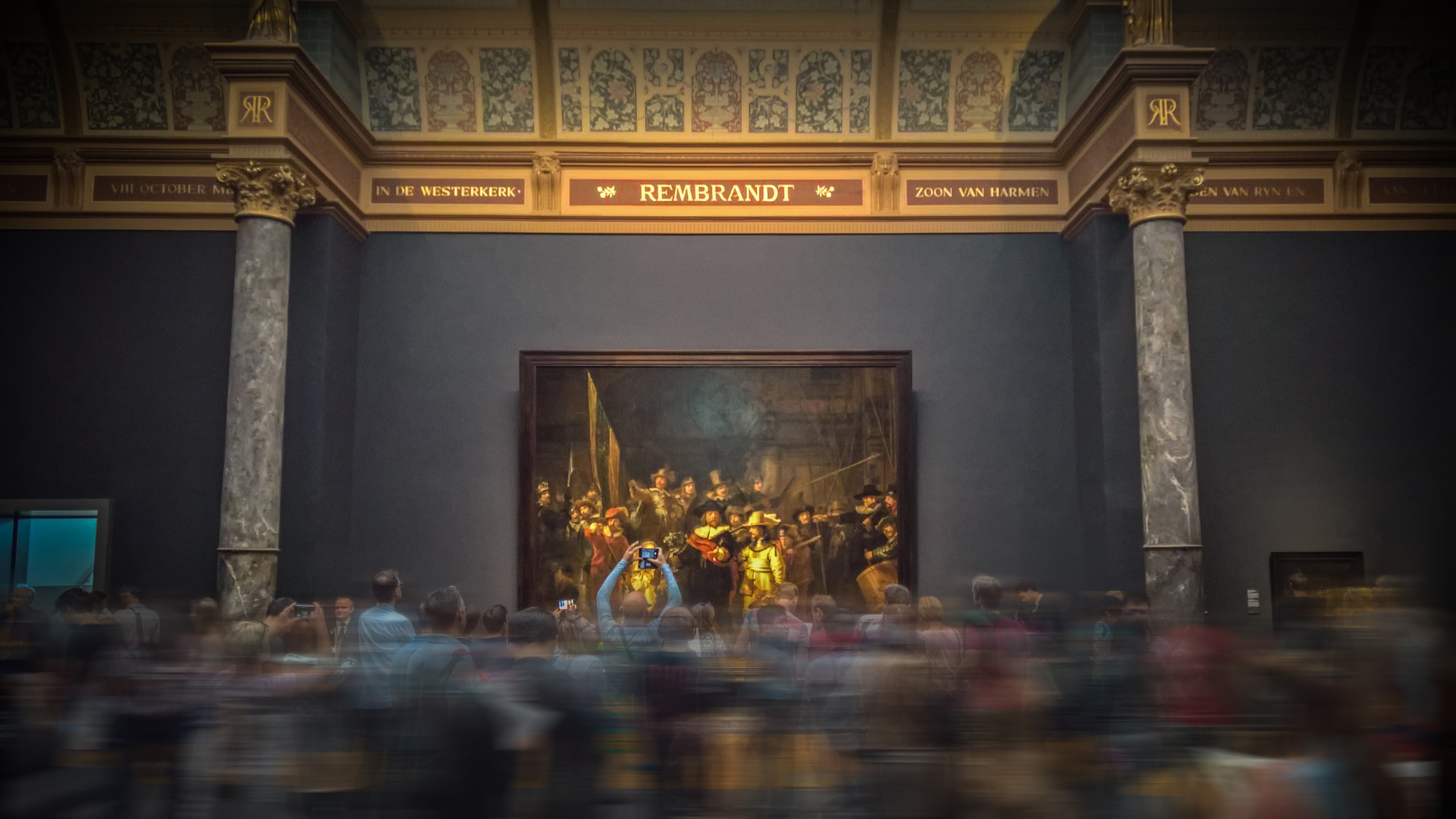News
An EdTech Company Bought edX from Harvard and MIT for $800 Million. Its Stock Price Has Plummeted Since.
News
HUCTW Rallies for Wage Increases Amid Contract Negotiations
News
Student Groups Host Event with Palestinian Activist Mohammed El-Kurd, Drawing Protest from Pro-Israel Students
News
Cambridge Becomes First Massachusetts City to Fully Abolish Parking Minimums
News
The Path to Public Service at SEAS
The art world has long been criticized for its lack of accessibility and elitism. This has been true from the 18th century, when the British Museum required people to show credentials proving they were of the echelons of high society in order to view its exhibits, to the modern day, in which museums offer memberships that afford special privileges to the wealthy while displaying art from artists they have not fairly compensated. In response, art lovers and artists alike have proposed radical methods to make art more accessible.
Most recently, the Rembrandt Heritage Foundation and HODL Finance have launched MetaRembrandt with the goal of making “Rembrandt’s oeuvre accessible and insightful to everyone.” Whether or not they’ve succeeded in that goal is up for debate. Through MetaRembrandt, the Foundation has created an 8,000 piece NFT collection of Rembrandt’s famous painting “The Night Watch,” for sale on their website. For the price of 0.15 ethereum, which translates to $234.78 USD (as of October 29) plus a “gas fee” of 0.006 ethereum ($7.50 USD), anyone can acquire a virtual piece of the painting along with several exclusive benefits.
Owning a “Night Watch” NFT makes purchasers a founding member of the MetaRembrandt museum, affording them lifetime access to the collection. Additionally, the 8,000 founding members will be listed on the wall of fame in the MetaRebrandt museum, be able to generate passive income by renting out their NFT, have access to the full collection of Rembrandt’s oeuvre, access “exclusive events in the MetaRebrandt museum and real life,” and access the founders chat. The most striking of these privileges is the exclusive access to the MetaRembrandt museum afforded only to those who purchase the NFT.
The MetaRembrandt initiative is divided into 4 phases. Phase 1 involves the sale of the 8,000 NFT pieces. In phase two, The Rembrandt Heritage Foundation will publish a new art book and airdrop it to the 8,000 original founders of the MetaRembrandt Museum. In phase thr, the foundation will assemble a virtual museum in the Metaverse, showcasing Rembrandt’s work. In the fourth and final phase, all of Rembrandt’s artwork will be available, but only to the 8,000 people who purchased “Night Watch” NFTs.
For an initiative that supposedly champions accessibility, the word “exclusive” appears an alarming amount of times on the MetaRembrandt website. Though some believe that this initiative is crucial in bringing art into the developing digital realm, it is unclear just how the Rembrandt Heritage Foundation intends to expand accessibility with admission to their museum being set at such a high price point, excluding many from the benefits they describe.
The price of a single NFT ($234.78) is almost equal to the amount a federal minimum wage worker makes in a week ($290), making Rembrandt’s work inaccessible to the 1.1 million people who earn wages at or below the federal minimum. This price is also equal to a whopping 7.2 percent of the average U.S. resident’s monthly disposable income, making access to MetaRembrandt a luxury many cannot fit into their already tight budgets. Furthermore, the MetaVerse itself is inaccessible with the VR technology needed to view the virtual Rembrandt museum, which can cost upwards of $400.
MetaRembrandt does not succeed at its goal of making Rembrandt’s work accessible to everyone. Evidently, it only expands access to Rembrandt’s artwork for wealthy members of society, who oftentimes are already able to pay for admission to museums showcasing Rembrandt’s paintings. Suspiciously, while accessibility to the artwork does not increase, the profits of the Rembrandt Heritage Foundation and HODL Finance do.
MetaRembrandt, then, brings the elitism of art curation to the virtual world by reinforcing the economic hierarchy that continues to plague the world of art. Not only is the museum only accessible to those with higher incomes, the privileges that come with purchasing an NFT — like a place on the museum’s wall of fame — create a sense of superiority among the exclusive “founders” group. While these wealthy few are able to rent their NFTs out at marked up prices to low-income people caught in the NFT craze, the founders are able to solidify their elite status by mingling with each other at the exclusive events their NFT ownership affords them invitations to. Such a system closely resembles the elitism that past museums (like the British Museum) and modern museums alike are criticized for.
MetaRembrandt is not making Rembrandt’s artwork accessible to all; they are virtually preserving Rembrandt’s art, as well as the exclusive and elite attitudes that surround it. Evidently, profit is the motivation behind the MetaRembrandt initiative, not expanding accessibility. More discussion on the merits of virtually preserving artwork is warranted, but that conversation cannot revolve around initiatives that prioritize profit and exclusivity over accessibility and artistic expression.
Want to keep up with breaking news? Subscribe to our email newsletter.
Author
Administraroot


